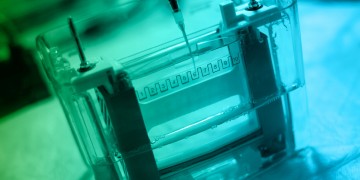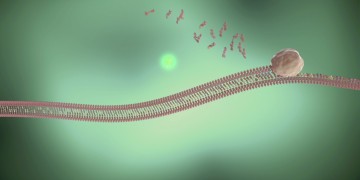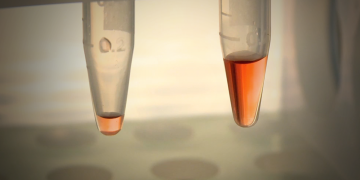
Learning in their DNA: Inside the Bio-Rad Science Ambassador Program
Take a closer look at Bio-Rad’s initiative to bring scientists into K–12 schools in North America by following three Ambassadors as they go into classrooms. Find out more about what this program offers students, teachers, and researchers.

Investigating Protein Translation with Bio-Rad’s NGC Chromatography System
The Fraser Laboratory in the Dept. of Molecular and Cellular Biology at UC Davis studies protein translation mechanisms by purifying diverse ribosomal proteins and reconstructing the translation complex in vitro. The lab utilized Bio-Rad’s NGC system to overcome specific purification difficulties with their protein while beta-testing the equipment. The NGC system enabled the group to increase their throughput by 25% and also saved substantial training time.

Amplifying in the Outback: Researcher Brings Real-Time PCR to Australia’s Kimberley Wilderness
Dr. Tim Inglis of the University of Western Australia seeks better ways to conduct surveillance and respond to outbreaks of tropical infectious diseases. For over a decade he’s been developing detection assays for a slate of pathogens. Find out how Bio-Rad’s MiniOpticon Real-Time PCR system allows him to effectively run these assays in such remote locations as the Kimberley Wilderness in Australia’s Top End.

TGX Stain-Free™ Precast Gels Facilitate LDL Research on Potential New Drug Targets
When Dr. Fred Bauzon started his research, he worked with bioinformatics specialists to functionalize suitable gene candidates based on their expression levels with HMGCR transcript levels. All his experiments demonstrated a reduction in low-density lipoprotein receptor protein (LDLR) and candidate gene protein levels after the candidate gene was silenced. Here Bauzon discusses how TGX Stain-free precast gels have aided his research toward future drug targets for the therapeutic control of LDL uptake.

High Sensitivity of Bio-Plex® Multiplex System is Key in Study for Novel Melanoma Therapeutics
alt
Melanoma is an aggressive cancer where early detection is essential for patient survival. The Facchiano lab is developing new anti-proliferation molecules against melanoma and is working to identify new molecular markers at the very early stages of pathology. Here Dr Antonio Facchiano discusses the merits of using the Bio-Plex technology to measure dose-dependent changes in expression levels of growth and angiogenic factors in cell lysates and supernatants.

Droplet Digital PCR Opens New Perspectives in HIV Research
Sangamo BioSciences, Inc., located in Richmond, California, is developing HIV therapeutics toward a functional cure using their proprietary zinc finger DNA-binding protein technology. Droplet digital PCR (ddPCR™) — or third generation PCR — offers a superior solution as it can detect target sequence within a single molecule, making it a powerful technology for low copy event detection.

Novel HRM Assays Expedite Drug Resistance Surveillance for Leprosy Research
The significant drop in leprosy worldwide is attributed to the development of antimicrobial multidrug therapy (MDT). Resistance to rifampicin — the backbone of MDT treatment — has appeared. Controlling leprosy transmission requires routine surveillance for mutations in the drug target genes before, during, and after the course of treatment. New high resolution melt (HRM) assays offer leprosy researchers a faster, more economical method to investigate resistance targets.

Bio-Plex® System in Korea — Seeking to Improve Outcomes for Cancer Patients
Dr Hunseok Lee has known since childhood that he wanted to grow up to become a scientist. “You get to wear white gowns, look through a microscope at various substances so small they can’t be seen by the naked eye — those things were very attractive to me when I was young,” says Lee. But the realities of putting research into practice and translating ideas into experiments have proven far more strenuous than the young Lee anticipated.

Identifying Cardiac Defect–Related Protein Signatures
Identifying Cardiac Defect–Related Protein SignaturesAugust 15, 2011
“The first opportunity I had to lay my hand on a human heart I knew that was that — I knew that I wanted to know how the heart works, but more importantly, how it doesn’t work,” says Dr Francis Spinale, describing his inspiration to both research and treat cardiac disease. Using the Bio-Plex® suspension array system, researchers in his laboratory are discovering protein signatures that have the potential to inform decision strategies in cardiac patient treatment.
